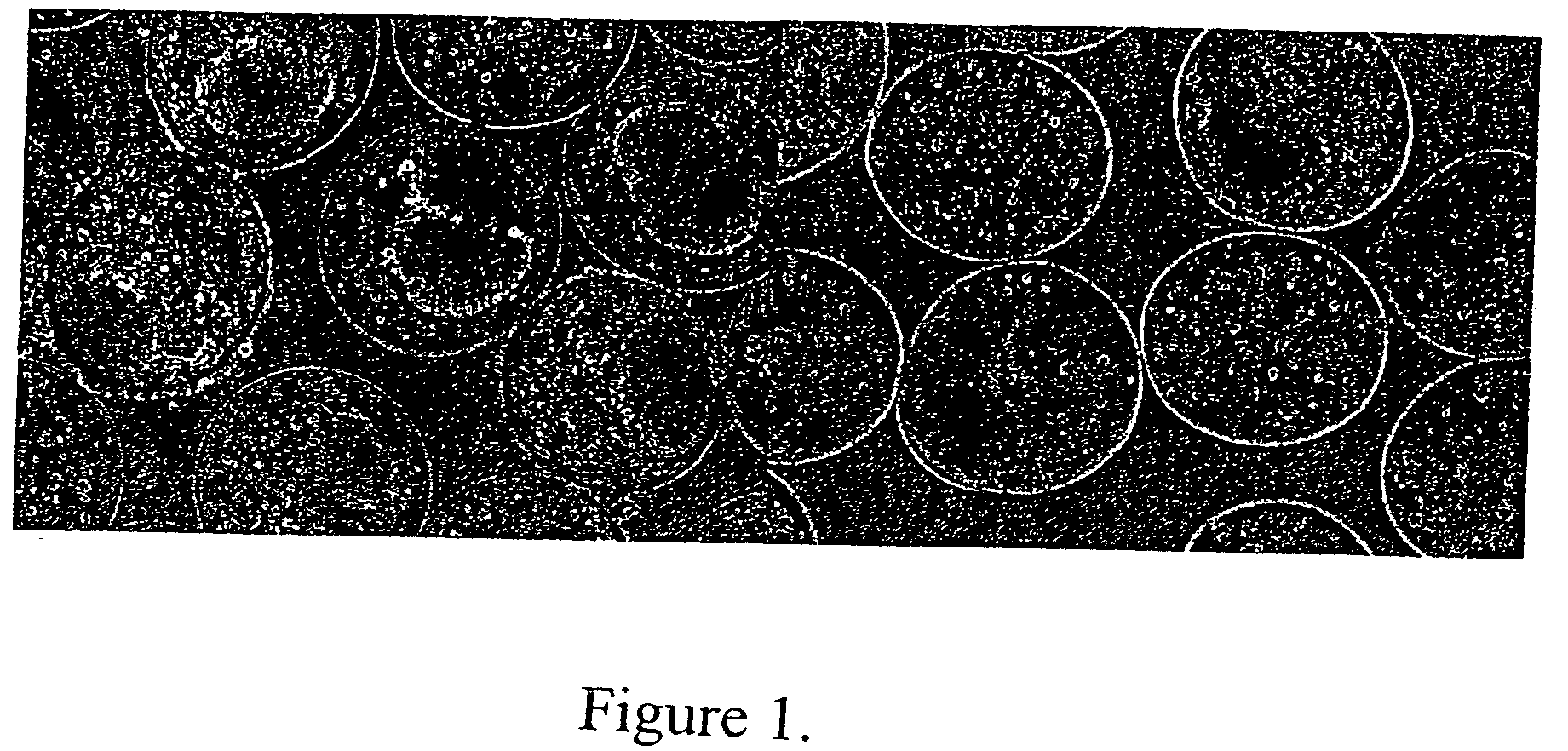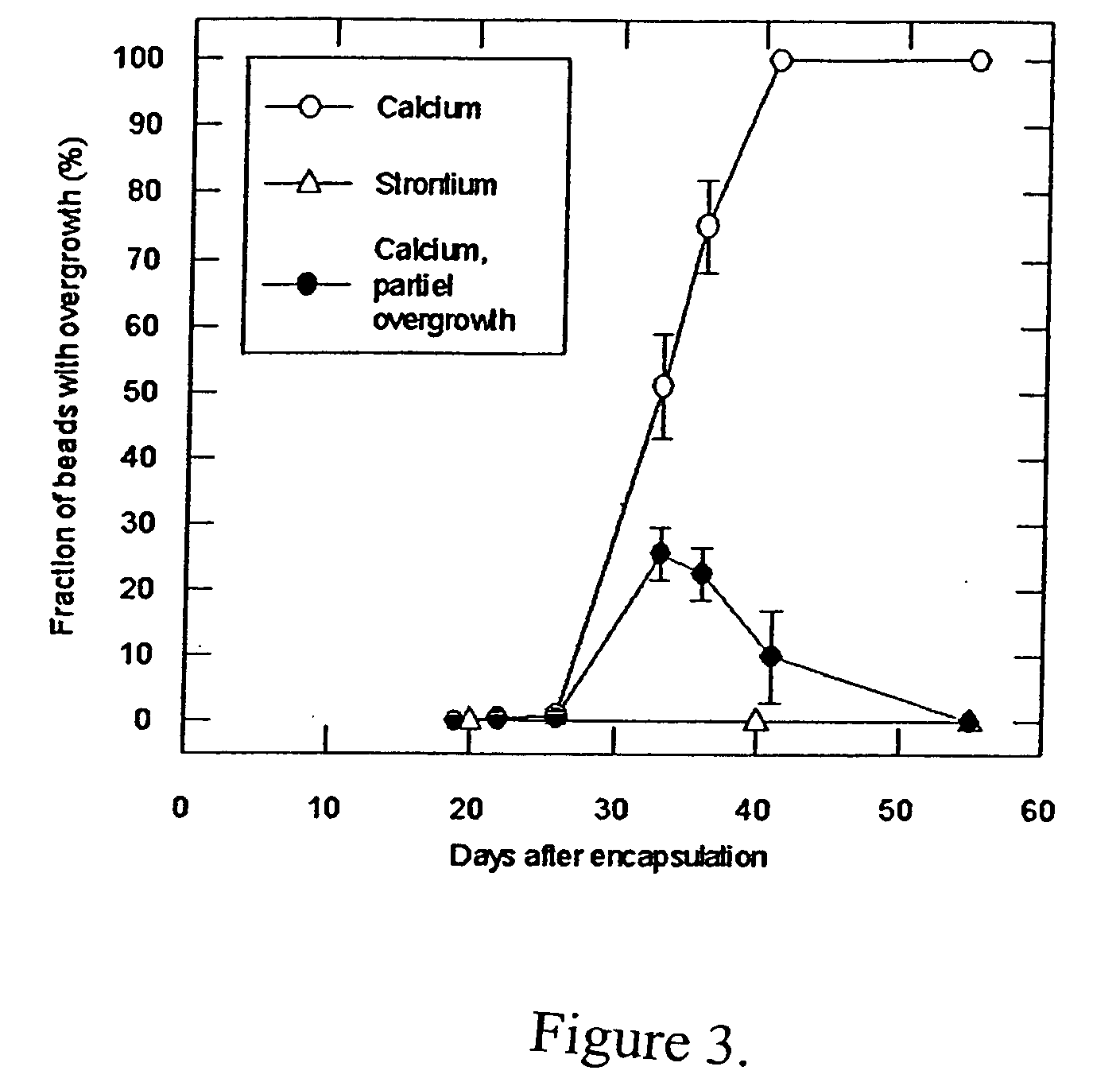Use of alginate matrices to control cell growth
a technology of alginate matrices and cells, applied in the field of alginate matrices, can solve the problems of cell growth and proliferation, cell proliferation, cell selection and availability of producer cells,
- Summary
- Abstract
- Description
- Claims
- Application Information
AI Technical Summary
Benefits of technology
Problems solved by technology
Method used
Image
Examples
example 1
[0056] In this work we have studied cell cultures entrapped in alginate beads and observed their growth within the beads and on the bead surface during time. We have found that cell growth may occur on the bead surface and that cells may cover the beads as spherical monolayers, and furthermore that this process is gelling ion dependent. These observations may have implications for understanding the mechanisms behind interactions between cells and the alginate matrix.
Materials and Methods
Cell Cultures and Encapsulation Procedure
[0057] Human HEK 293 Endo cells (embryonic kidney cells, transfected for endostatin production) and canine MDCK cells (derived from an apparently normal kidney of an adult female cocker spaniel) were used. The cells were routinely grown as monolayer cell cultures and recultured three times a week. In each experiment the cells were trypsinized, mixed with 1.8% PRONOVA SLG 20 alginate solutions and entrapped in alginate beads by using an electrostatic bead ...
example 2
[0070] Introduction
[0071] Transplantation of biopolymer based tissue constructs holds a promising future in the treatment of a large number of diseases. Biocompatible biopolymers may be used to entrap cells within microbeads, thus protecting the cells against immune attack from the host and physical stress. Compared to other polymers, alginates, in particular, have good properties as immobilizing agents, a property which rests in the ability to form heat-stable gels that can develop and set at physiologically relevant temperatures. Cells entrapped in alginate beads excreting therapeutic molecules may be used as bioreactors in vivo in the treatment of a large variety of diseases, including cancer, diabetes, Parkinson's disease, chronic pain and liver failure. Therefore, alginates are now widely used as immobilizing materials for cells or tissue in the development of bioreactor systems for therapeutic use.
[0072] As an alternative to processing fresh organs shortly prior to medical u...
PUM
| Property | Measurement | Unit |
|---|---|---|
| Length | aaaaa | aaaaa |
| Time | aaaaa | aaaaa |
| Time | aaaaa | aaaaa |
Abstract
Description
Claims
Application Information
 Login to View More
Login to View More - R&D
- Intellectual Property
- Life Sciences
- Materials
- Tech Scout
- Unparalleled Data Quality
- Higher Quality Content
- 60% Fewer Hallucinations
Browse by: Latest US Patents, China's latest patents, Technical Efficacy Thesaurus, Application Domain, Technology Topic, Popular Technical Reports.
© 2025 PatSnap. All rights reserved.Legal|Privacy policy|Modern Slavery Act Transparency Statement|Sitemap|About US| Contact US: help@patsnap.com



